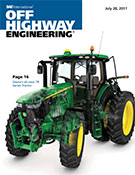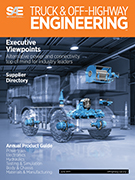Magazine

Automotive Engineering International 2001-01-01
2001-01-01
Ford's new four The largest engine development program in company history will lead to at least 200 applications, starting with the new Mondeo's Duratec HE and replacement of its existing cast-iron-block four-cylinders with higher aluminum content powerplants. GM Powertrain's new inline six for SUV's For the first time in nearly two decades, three new General Motors vehicles will feature an inline six-cylinder engine developed by GM Powertrain. Fuel-stratified injection from VW Though gasoline direct-injection technology is being introduced in the Lupo FSI, VW says it easily can be adapted for high-volume use in larger vehicles such as the Polo and Golf. LS6 for Z06 The latest high-performance Corvette engine features improved breathing, new pistons, an increased compression ratio, and a new high-profile camshaft.

















